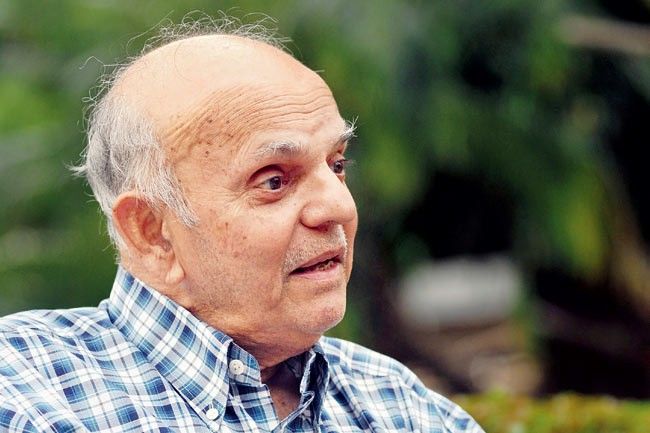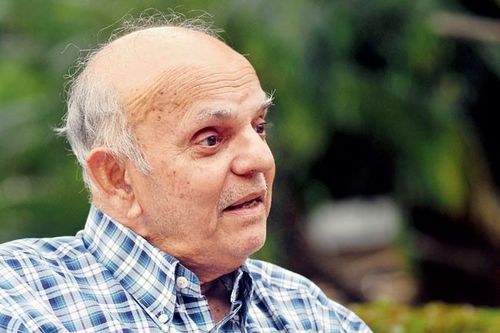
10 things you should know about Madhav Apte - India's most unfortunate cricketer

The unresolved story of former Indian Test cricketer Madhav Apte has piqued the interest of cricket fans over the generations. He had the opportunity to play with veterans like D.B Deodhar, Vijay Merchant, Vinoo Mankad and Polly Umrigar.
Despite having a healthy overseas tour of West Indies where he averaged around 50, Apte was never considered for the Test side again. In the 7 Test matches that he played for India, he scored 542 runs at 49.27, notching up three fifties and one hundred.
His brother Arvind Apte too played Test cricket for India.
While the reasons for Apte’s no inclusion remains unresolved, here is a look at 10 facts that you should know about India’s most unfortunate cricketer.
1. Started as a leg spinner
Madhav Apte started his career as a leg-spin googly bowler. He performed decently in that role as well and made people sit up and take notice with his 10 wickets for 10 runs in a match during the Gilles and Shield tournament.
2. Century on Ranji debut
During the 1951 Ranji season, Bombay opener Vijay Merchant got injured a few days before their first match against Saurashtra, and Apte, who was the backup opener, got his opportunity to make his debut. He ended up scoring a century and had a good season overall.
3. Opening with his idol Vinoo Mankad
Apte attended Elphinstone College in Mumbai, where Vinoo Mankad became the coach in 1948. The star Indian all-rounder felt that Apte would make a good opener, and asked him to carefully watch Vijay Merchant in order to learn the right technique. At 20, Apte made his debut for India against Pakistan in their 1952 tour of India. He opened the innings with his guru Vinoo Mankad and scored 30 and 10* in the match.
4. The West Indies Tour
The following year, he was selected for India’s tour to West Indies, where he finished as the second highest scorer for India after Polly Umrigar, scoring 460 runs in 5 matches at an average of 51.1, including 163 runs at Port of Spain. Umrigar had scored 560 runs at 62.22, but India lost the 5 match series 0-1.
5. The mysterious dropping
After coming back from the West Indies tour, Apte played in only one first-class match in 1954, since India did not play any Test that year. He scored 30 odd runs in that match, and he was never selected for the Test team again, despite averaging around 50 in his last Test series. His dropping remains, as Apte himself said in an interview to ESPNCricinfo, “an unsolved mystery” in Indian cricket, which the cricketers of that era have failed to know why.
6. Joining the family business
After being constantly ignored by the selectors for back to back series, the Mumbai batsman finally joined his family business, though he continued playing first-class cricket. Even as he kept scoring centuries in domestic cricket, his national call did not come, and he finally retired from international cricket at the age of 34. In a 16 year long career, he scored 3336 runs at 38.79 in first-class cricket, including six centuries and 16 fifties.
7. Playing against Sachin
Apte is the only player to have played alongside D.B Deodhar – the “Grand Old Man of Indian Cricket”, and Sachin Tendulkar. In the 1987-88 domestic season, 55-year old Apte was playing for the CCI at Shivaji Park Gymkhana against a 14-year old Tendulkar. The following year, as the president of CCI, it was Apte who bent the rules of the dressing room to allow Tendulkar to be a playing member of the club.
8. Becoming the Sheriff
In 2000, the former Test opener donned a new role, when he was appointed as the Sheriff of Mumbai city.
9. Turning an author
In May 2015, the veteran released his autobiography titled “As Luck Would Have It” at the Wankhade stadium in Mumbai. The launch was attended by many dignitaries and former cricketers including Sunil Gavaskar, who revealed many anecdotes about Apte. The Little Master also confessed how he was astonished on Apte’s non-selection over the years.
10. Lala Amarnath Controversy
When Apte was dropped despite amassing 460 runs in a series in West Indies, Lala Amarnath was the chief selector. Many years later, in his autobiography, Apte revealed that soon after the West Indian tour, Lala Amarnath had come to his father, asking for a Delhi franchise of their family’s famous Kohinoor mills. Bausaheb Apte, his father, had politely declined the Chief selector. Amarnath had remained in that position for many years to come, and Apte was never considered for the national side ever again.